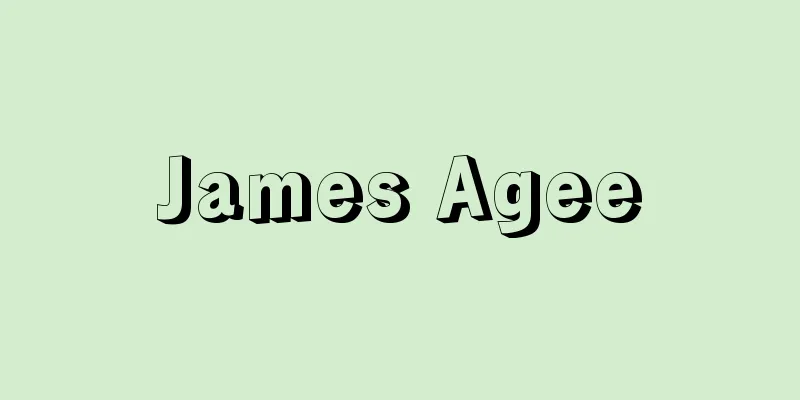Urakami Christian Incident

|
This was an incident of persecution of Urakami Christians at the end of the Edo period and the beginning of the Meiji period. Under the Edo Shogunate's ban on Christianity, Christians in Urakami, Hizen (Nagasaki City) maintained their faith as "hidden Christians" under the guidance of their chokata (official priests) and mizukata (water officials). There had already been incidents of Christians being discovered and arrested, such as the Urakami First Persecution in 1790 (Kansei 2), the Urakami Second Persecution in 1842 (Tenpo 13), and the Urakami Third Persecution in 1856 (Ansei 3). This incident, the Urakami Fourth Persecution, occurred after Japan opened its borders to the world. In 1865 (Keio 1), the Oura Cathedral was built by French missionaries Petitjean and others, and within the Cathedral the missionaries and Urakami Christians met and declared their faith, which led to the so-called "Christian Revival." In 1867, the Urakami Christians carried out a self-burial without the assistance of the monks of their temple, Shotoku-ji, which led to the villagers refusing to accept the temple as their trustee. On June 14 (July 15 in the Gregorian calendar), the Nagasaki Magistrate's Office decided to arrest and imprison the Urakami Christians. This incident became a diplomatic issue due to protests from foreign envoys, but the shogunate collapsed without a resolution and was taken over by the Meiji government. The Meiji government continued the shogunate's policy of banning Christianity, and in 1869 (Meiji 2) carried out the exile of all Urakami Christians who had been placed in village custody. However, due to protests from other countries and the persecution of Christians becoming an obstacle to the revision of the treaty, in 1873 the ban on Christianity was removed and the Christians who had been exiled to the feudal domains of western Japan were allowed to return to their villages. The torture, persuasion, and hard labor that the Christians experienced in their exile are passed down as so-called "travel stories." [Sanae Murai] "The Fourth Urakami Uprising, by Yakichi Kataoka (1963, Chikuma Shobo)" Source: Shogakukan Encyclopedia Nipponica About Encyclopedia Nipponica Information | Legend |
|
幕末・明治初期における浦上キリシタンへの弾圧事件。江戸幕府のキリシタン禁制体制下にあって、肥前浦上(長崎市)のキリシタンは、お帳方(ちょうかた)、お水方(みずかた)らの指導のもとに、「隠れキリシタン」としてその信仰を守った。すでに1790年(寛政2)に浦上一番崩れ、1842年(天保13)に浦上二番崩れ、56年(安政3)には浦上三番崩れと、キリシタンの発覚、検挙事件があったが、開国後に浦上四番崩れである本事件が起こった。65年(慶応1)フランス人宣教師プチジャンらにより大浦(おおうら)天主堂が建立され、天主堂内で宣教師と浦上キリシタンとの出会いが行われて信仰表明がなされ、いわゆる「キリシタンの復活」となった。67年浦上キリシタンは檀那寺(だんなでら)である聖徳寺僧によらない自葬を敢行し、村民らの寺請(てらうけ)拒否へと発展し、6月14日(陽暦7月15日)長崎奉行所(ぶぎょうしょ)は浦上キリシタンの検挙、投獄に踏み切った。 この事件は、外国公使らの抗議によって外交問題化したが、解決をみないまま幕府は瓦解(がかい)し、明治政府に引き継がれた。明治政府は幕府のキリシタン禁制政策を踏襲し、1869年(明治2)いったん村預けになっていた浦上キリシタンの総配流を断行した。しかし諸外国の抗議や、キリシタン弾圧が条約改正の障害になることから、73年、キリシタン禁制高札を撤去し、西日本諸藩に配流したキリシタンを帰村させた。キリシタンが配流地で体験した拷問、説諭、夫役(ぶやく)などはいわゆる「旅の話」として伝えられている。 [村井早苗] 『片岡弥吉著『浦上四番崩れ』(1963・筑摩書房)』 出典 小学館 日本大百科全書(ニッポニカ)日本大百科全書(ニッポニカ)について 情報 | 凡例 |
Recommend
Five-ring tower - Gorinto
A tower consisting of five parts modelled on the ...
Offshore Business
The total amount of transactions in Panama is $1....
City planning - Toshikeikaku (English spelling) city planning
Urban planning is essentially a comprehensive pub...
Eshin Sozu - Eshin Sozu
⇒Genshin [Proverbs, etc.] The absence of people an...
Ontology (English spelling)
A dictionary for defining concepts used in expert ...
National History Series - Kokushi Taikei
A series of important historical documents from an...
Iron oxalate (iron oxalate)
Iron oxalates in the oxidation states II and III a...
Asphalt
…In 1915, after the outbreak of World War I, he f...
Tabari - al-abarī (English spelling)
A representative historian and Quran scholar of t...
volcanism
…the general term for the phenomena caused by mag...
Guide Dog - Moudouken
A guide dog is a dog that safely guides the visua...
Particle beam
A thin stream of particles such as atoms, molecule...
disturbance of thought
…In this way, the functional connection from the ...
Cupido - Cupido (English spelling)
He is the son of the Roman goddess Venus and symb...
Mating system
Sexually reproducing animals must encounter a mate...
![Toi [town] - Toi](/upload/images/67cc4c3f5a82c.webp)








